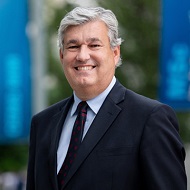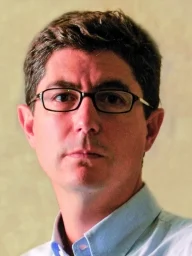Esade, UPC and IED Barcelona students develop innovative solutions for environmental pollution in conjunction with CERN
A project aiming to improve water treatment plants; a helmet that filters polluted air and takes samples to gather data about air quality; a robot that gathers data about microplastics in the oceans; and an app to mitigate the exposure of runners to pollution. These are some of the innovative solutions developed by students from Esade, the Universitat Politècnica de Catalunya-BarcelonaTech (UPC) and the Instituto Europeo di Design (IED Barcelona) within the framework of the tenth edition of the Challenge-Based Innovation (CBI) program, a venture promoted by @IdeaSquare and the Innovation Department at the CERN (European Organization for Nuclear Research) to encourage multidisciplinary teams of students, in conjunction with the teaching and research staff of several entities, to develop new solutions for the future of humanity.
This year’s CBI, within the framework of the EU ATTRACT Academy, has focused on SDG 3.9.1 concerning the reduction of deaths and illnesses caused by air pollution, SDG 11.6 related to the reduction of the environmental impact of cities; SDG 14.1, reduction of ocean pollution; and SDG 14.3, reduction of the acidification of oceans.
Specifically, 8 university teams consisting of 43 students aged between 21 and 49 from 14 different nationalities ― studying the Esade Full-Time MBA programs, the UPC telecom engineering and electronic engineering bachelor’s degrees, and the IED Barcelona Master in Design Management ― worked for 15 weeks on the start-up prototypes to address the challenge of air and water pollution using specific CERN technologies assigned to them, such as IALL, SNIFFIRDRONE, PiPe4.0 and H3D-VISIOnAiR.
Proposals for addressing environmental pollution
Detecting microplastics in the air. Team The Bridgemans has developed a project for detecting microplastics in the air. Tiny invisible plastic particles and fibers put our health and, particularly, our respiratory system at risk, so these students focused on a research project to deliver a solution to textile factory workers in Vietnam, a country where 1.5-2 million people work in the textile industry. The pinpointing and gathering of microplastic data enable factories and the global brands working with them to make a social impact that benefits the health of their workers and their families too, and also their rights and financial stability. This team has designed a system to prevent, detect and analyze microplastics in the air and the consequences, thereby generating a systemic solution for a problem that may worsen in the future.
Efficient water management. Team The Curietors has created Nutri Clean, a venture designed to improve water treatment plants throughout Europe. The project addresses nutrient overload in marine ecosystems – a growing issue that causes harmful algae blooms and dead zones in bodies of water – by combining existing water treatment technologies with a cutting-edge monitoring device, and thereby ensuring optimal plant performance. By 2045, the European Union aims to treat all tertiary water to eliminate excess nitrogen and phosphorus, and Nutri Clean is a step in the direction of environmental sustainability and economic efficiency in water management.
Diagnosis and prevention of disease in fish. The Meitner team considers that aquaculturists lack the implementable diagnostics and preventive measures necessary to identify sick fish early, and that this could cause significant economic losses and environmental damage. The solution they propose features continuous behavioral monitoring to identify sick fish early by their movement, combined with regular microscopic and spectral imaging to diagnose problems before mass mortality occurs, using a combination of IALL and H3D-VISIOnAiR technologies.
A mold detector. The Midas team aims to reduce mold infestations in flats occupied by low-income tenants in the UK and has developed a device that detects mold earlier than the most common methods available whilst also helping to prevent the growth of new mold spores. The outcome is an innovative design consisting of many elements, including sensors connected to an Arduino circuit with a built-in algorithm, and also PiPe4.0 Raman spectroscopy technology for spore detection and classification.
A helmet for the transition to electric vehicles. The Feynmans team’s project is based on a systematic approach to reducing the emission of two-wheeled vehicles by means of plan that focuses on the transition to electric vehicles in which drivers have crucial role. To get these drivers involved, the team has developed a helmet that filters polluted air and gathers samples to obtain data about air quality. They focused on the city of Delhi, but their project could be extended to other large cities with similar characteristics. The Delhi case study has four aims: improve driver safety, provide updated data about air pollution through an app, encourage drivers to make said transition, and use the gathered data to draw up action plans.
A system that pinpoints and monitors oil spills. The Maxwell team aims to detect and monitor oil in polluted areas and, specifically, in communities in developing countries to help them improve their health and nutrition. They have developed a system that combines SNIFFIRDRONE technology with other gas detectors in order to detect and monitor oil spills early in the Niger Delta and other parts of the African continent.
A robot that gathers data about micro plastics in oceans. The Newton team has developed an advanced robot to address the growing challenge of microplastic pollution in oceans and the constraints of present-day data collection methods which are often rudimentary and poorly automated. This robot, equipped to perform in situ measurements similar to those gathered in a laboratory but using automated means, is capable of collecting a wide range of data, improving their quality, and providing detailed maps of microplastic concentrations. The outcome is a more efficient and precise approach to this environmental issue.
A device that mitigates runners’ exposure to environmental pollution. Team The Feynmans aims to create a device to monitor the exposure of runners to air pollutants in Barcelona and deliver the necessary data to public institutions and open-source databases with a view to improving existing models, contributing to public awareness and helping with effective regulations, besides creating a customized health advisory platform where users can mitigate the potential health risks caused by pollution. By establishing a social media platform using real-time data, the project also empowers people to make informed decisions about their running routes, thereby promoting a healthier lifestyle by taking air pollution into account.





